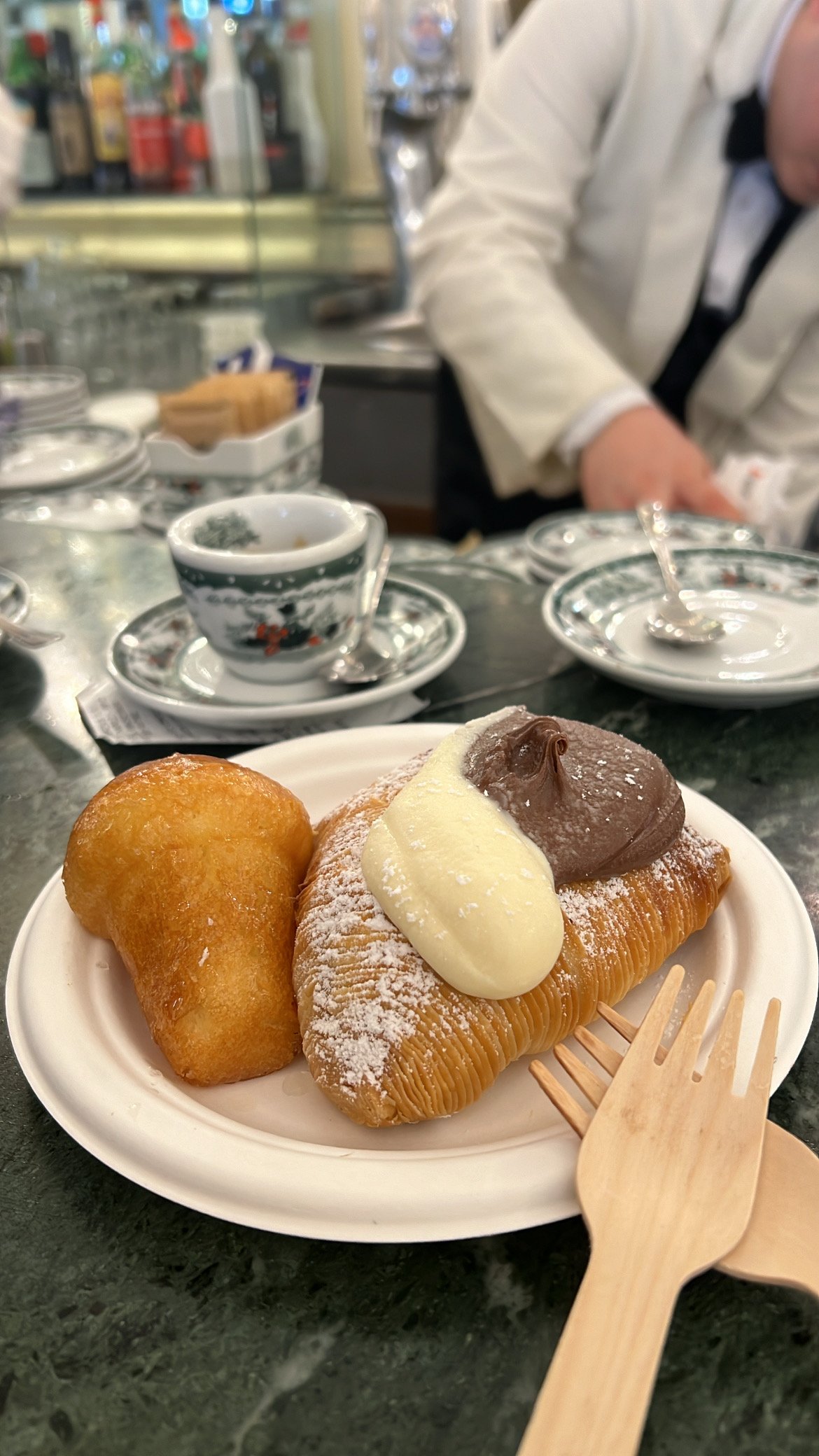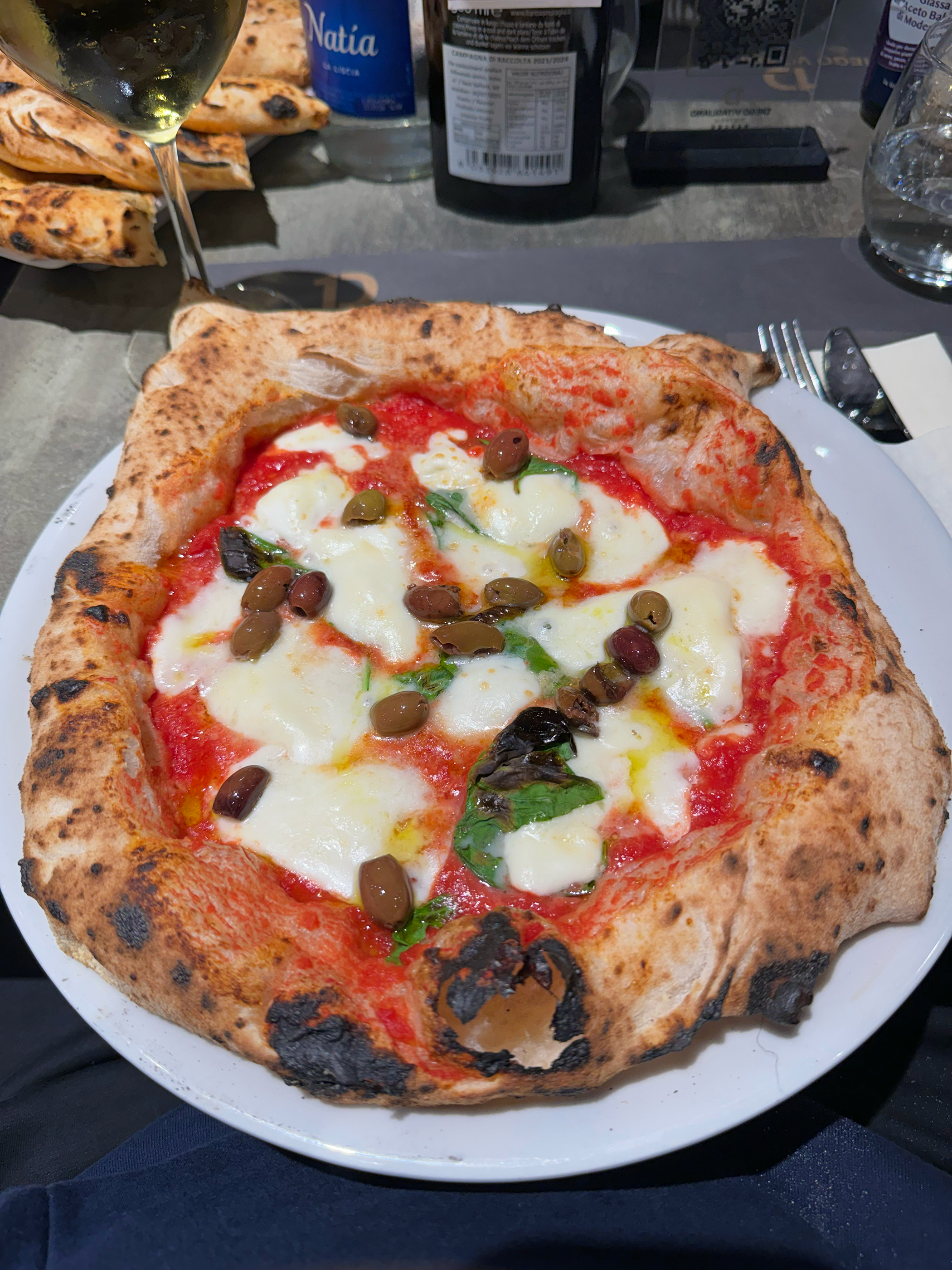Your Food Guide to Italy: Naples Edition
“Il dolce far niente” is an Italian invitation to slow down, savor every lucious drop of life and immerse yourself in the magic of your surroundings.
When my boyfriend, Bryce, and I ventured to Italy in February, we were determined to embody the Italian lifestyle and rediscover the power of truly being present. After months of preparation, restaurant research and picking the perfect Valentine’s Day dress, I’m happy to report, we did exactly that.
We ate more plates of fresh pasta than I care to admit, drank Italian wines our lips had never before kissed and explored until our feet couldn’t possibly deliver us another cobblestone step. That’s just what you do in Italy, and if you’re planning to find yourself there soon, this guide promises to serve you well.
In the event that this finds the hands of strangers, allow us to introduce ourselves. I’m Melissa Santell, a food photographer and marketing consultant in the hospitality industry. My family’s Italian roots run deep and I’m proud to be one half of this article’s perspective. This guide was co-designed by my better half, Bryce Bonsack, a Michelin Star chef based in Tampa, Florida, who spent a year living in Italy prior to opening his own Italian restaurant.
Together, our perspectives shape everything you’ll read below… in a shall we say, uniquely differentiated way from other guides you might find in a rogue Google search. If we haven’t met, it’s nice to meet you! If you know us, hi, we love you and thanks for reading.
This guide is broken down into 3 parts: Naples, Rome and Tuscany. Each outlining our favorite places to eat, stay and lose track of time in.
I hope that our recommendations help you lean into the sweetness of doing nothing.
xox,
Melissa + Bryce


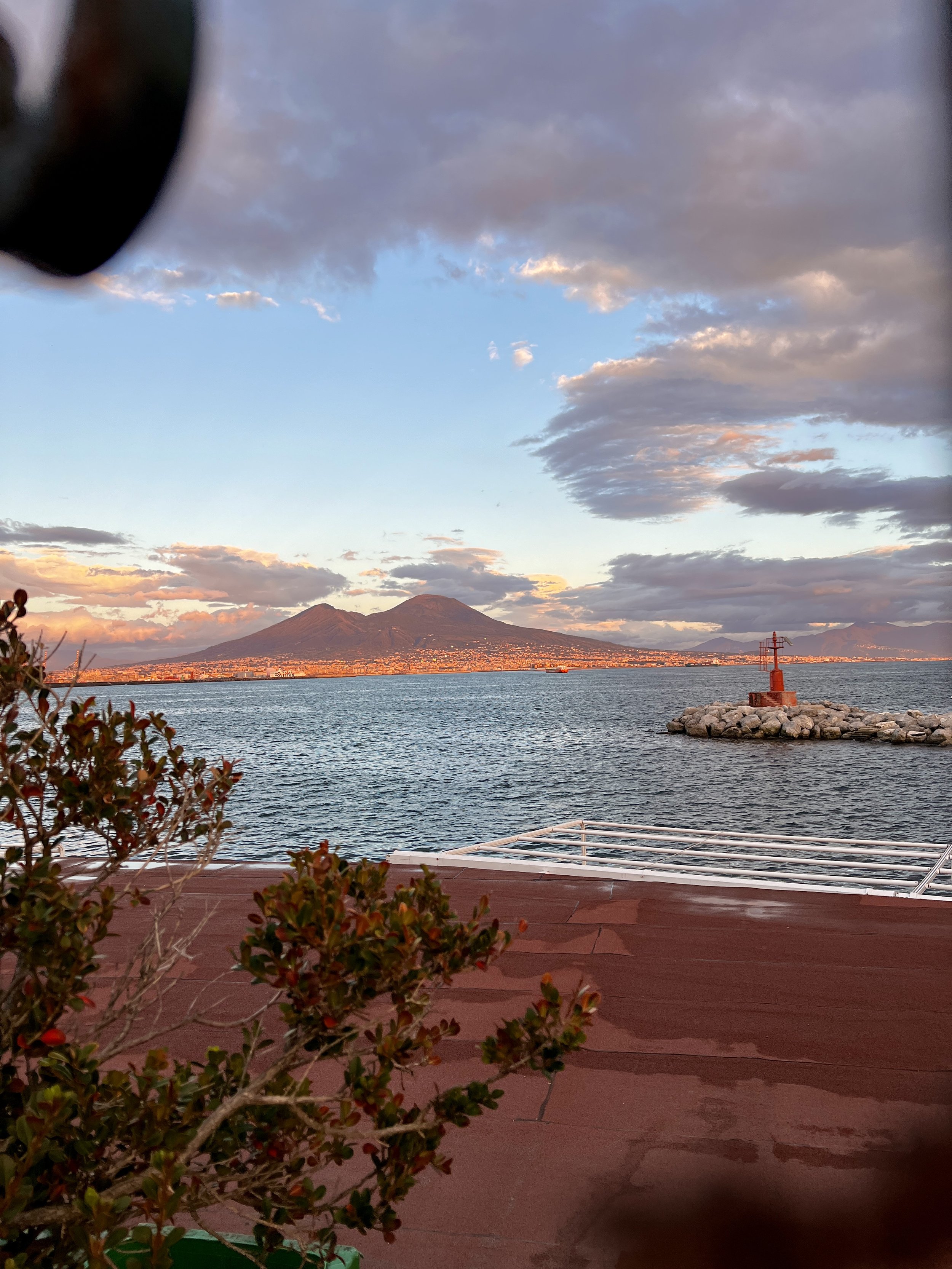
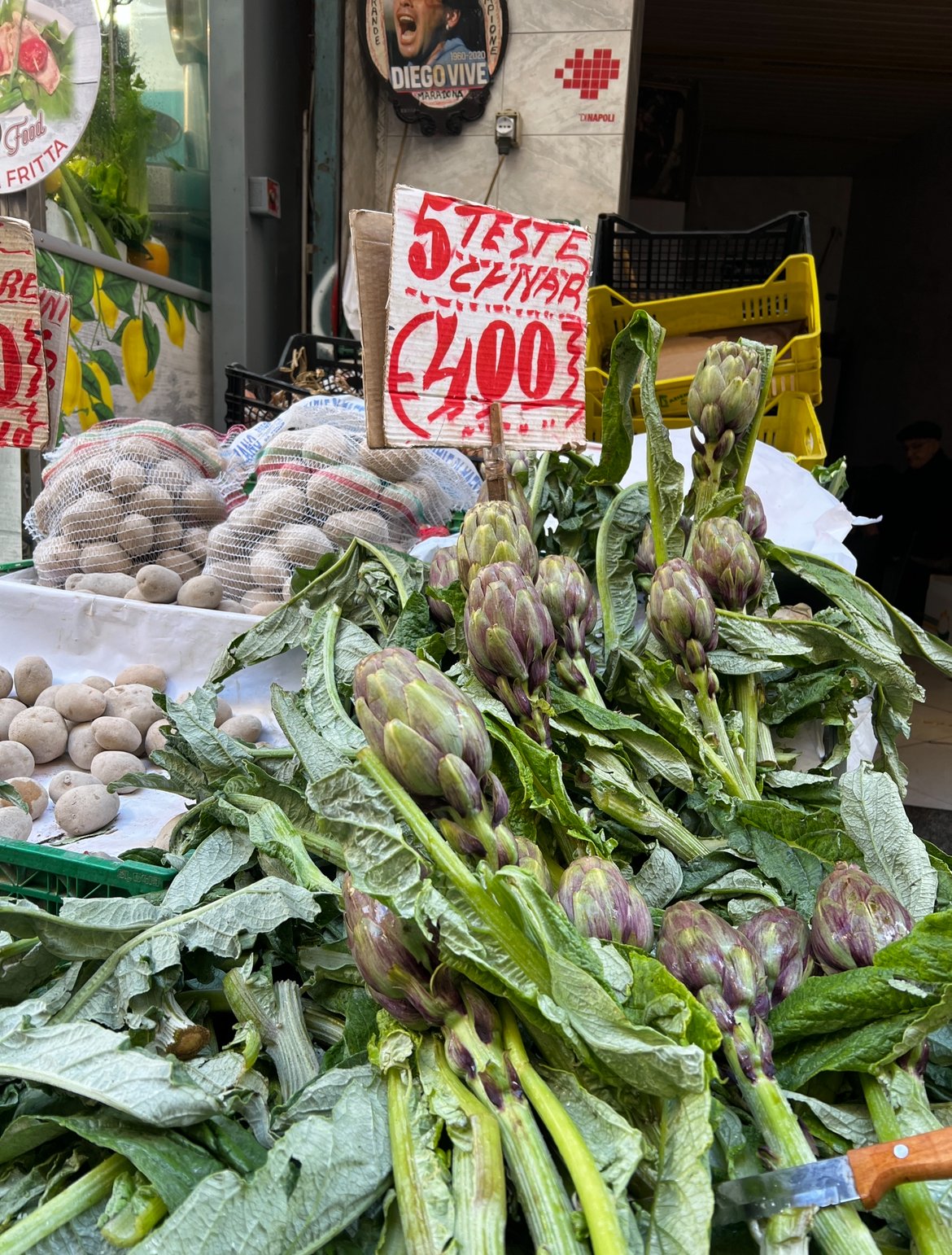
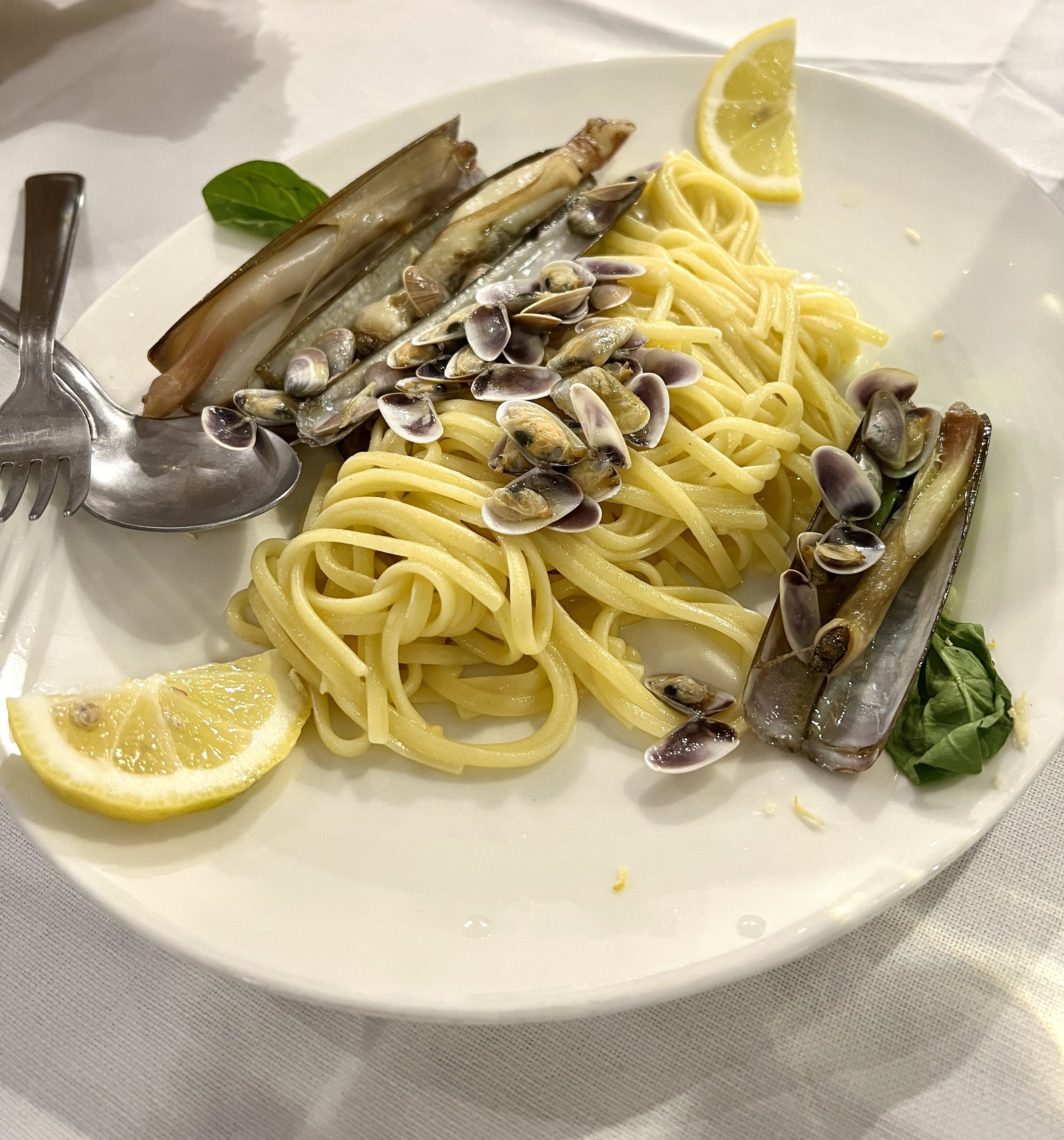
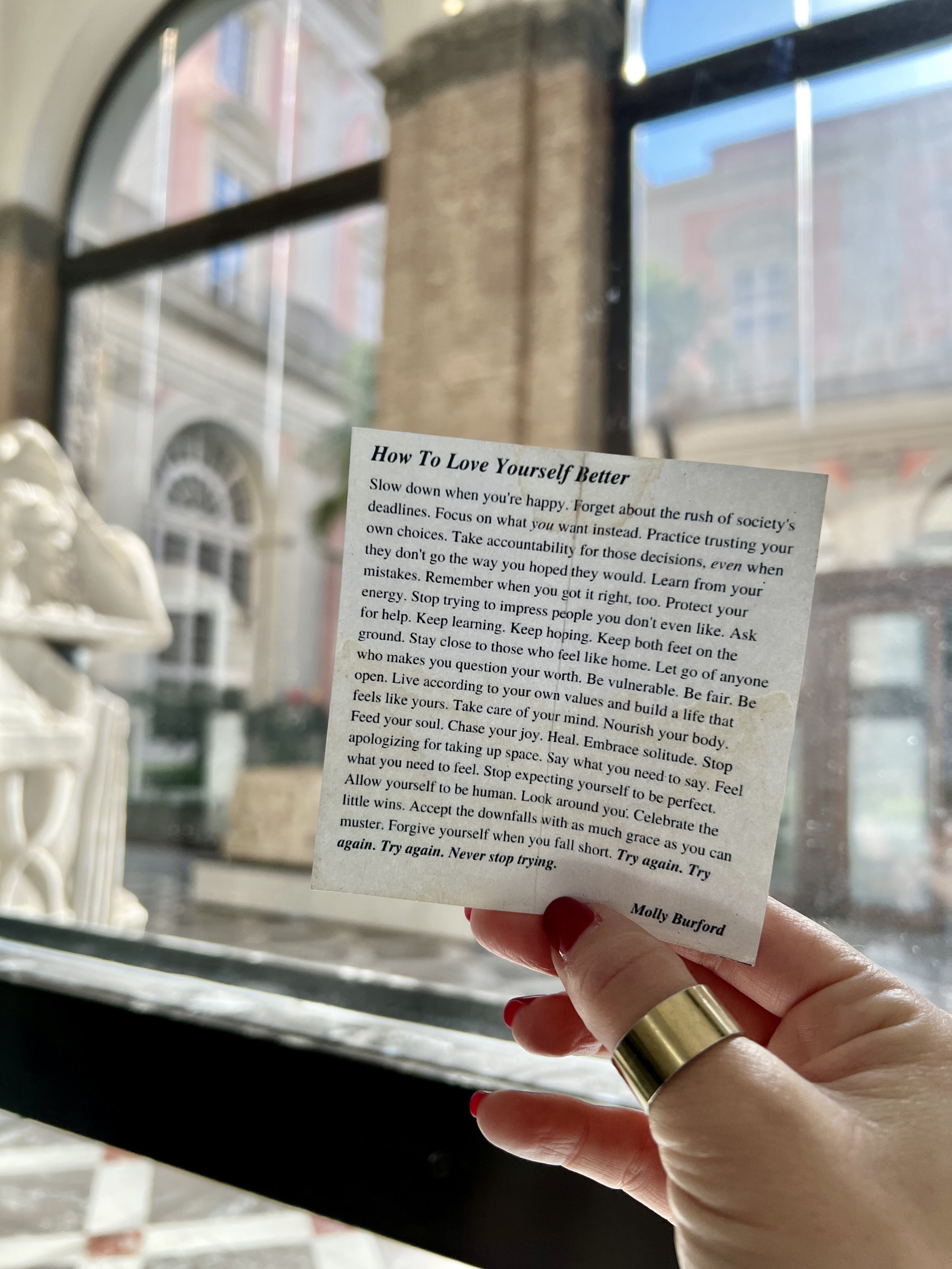
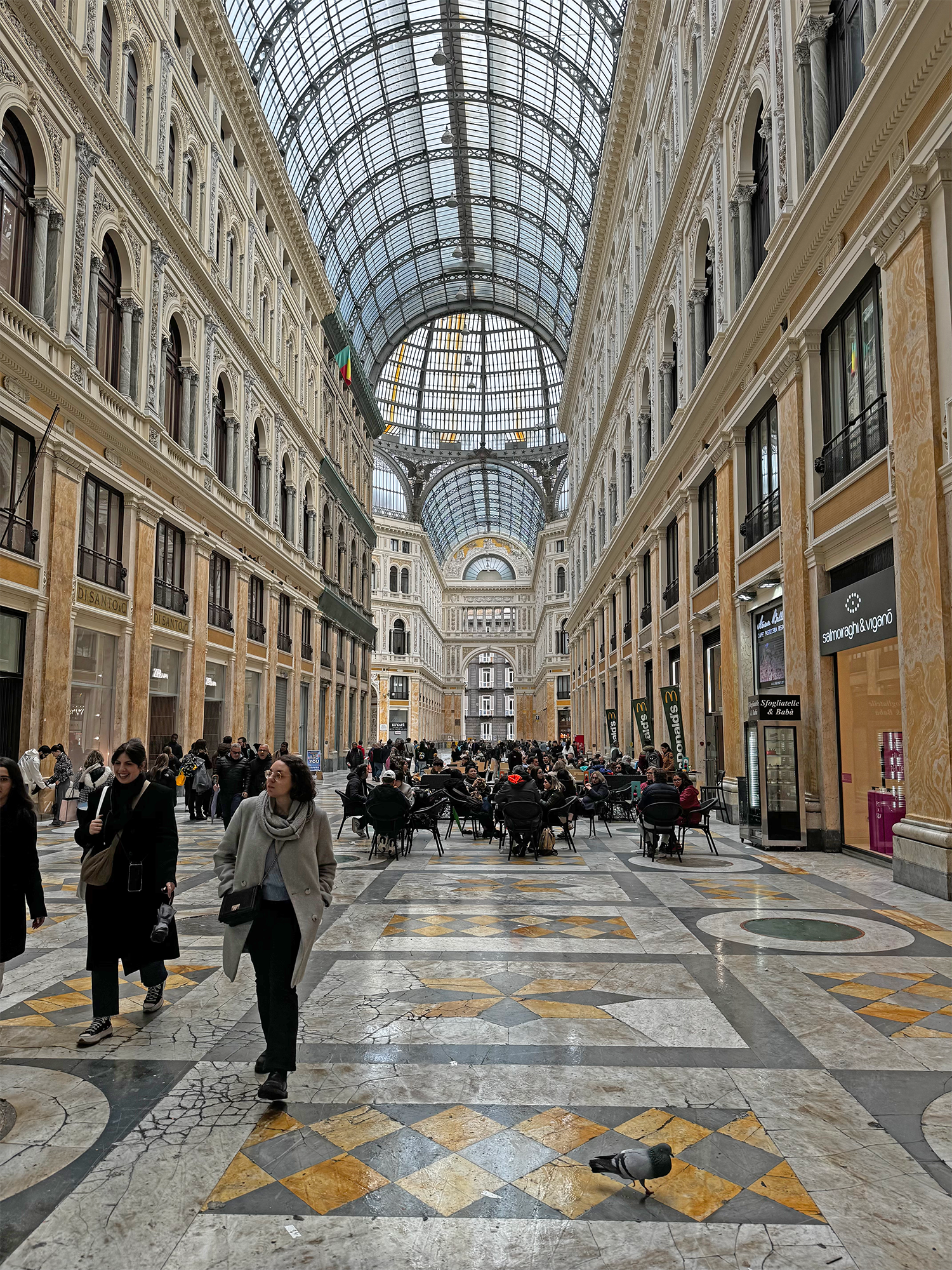
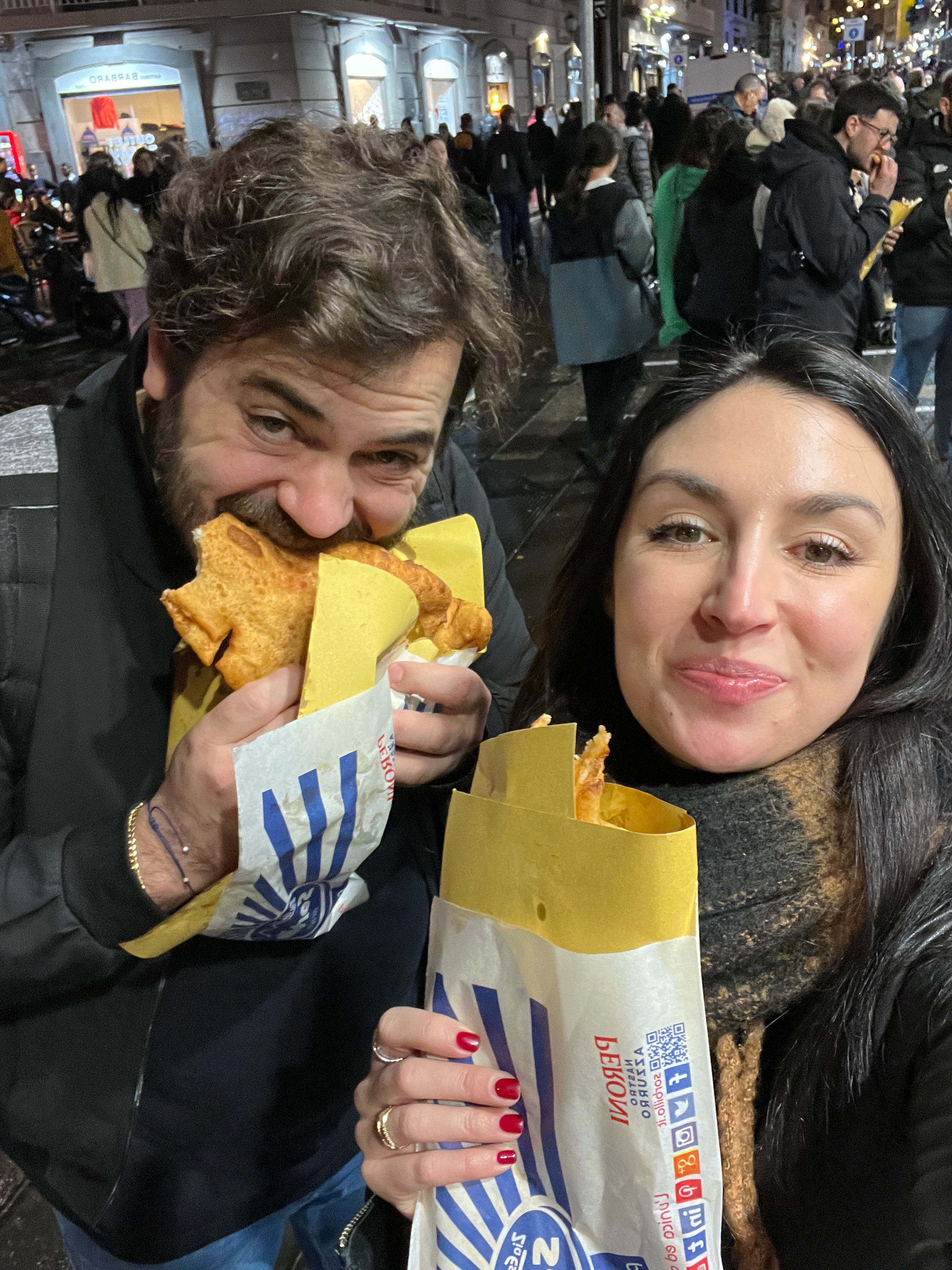
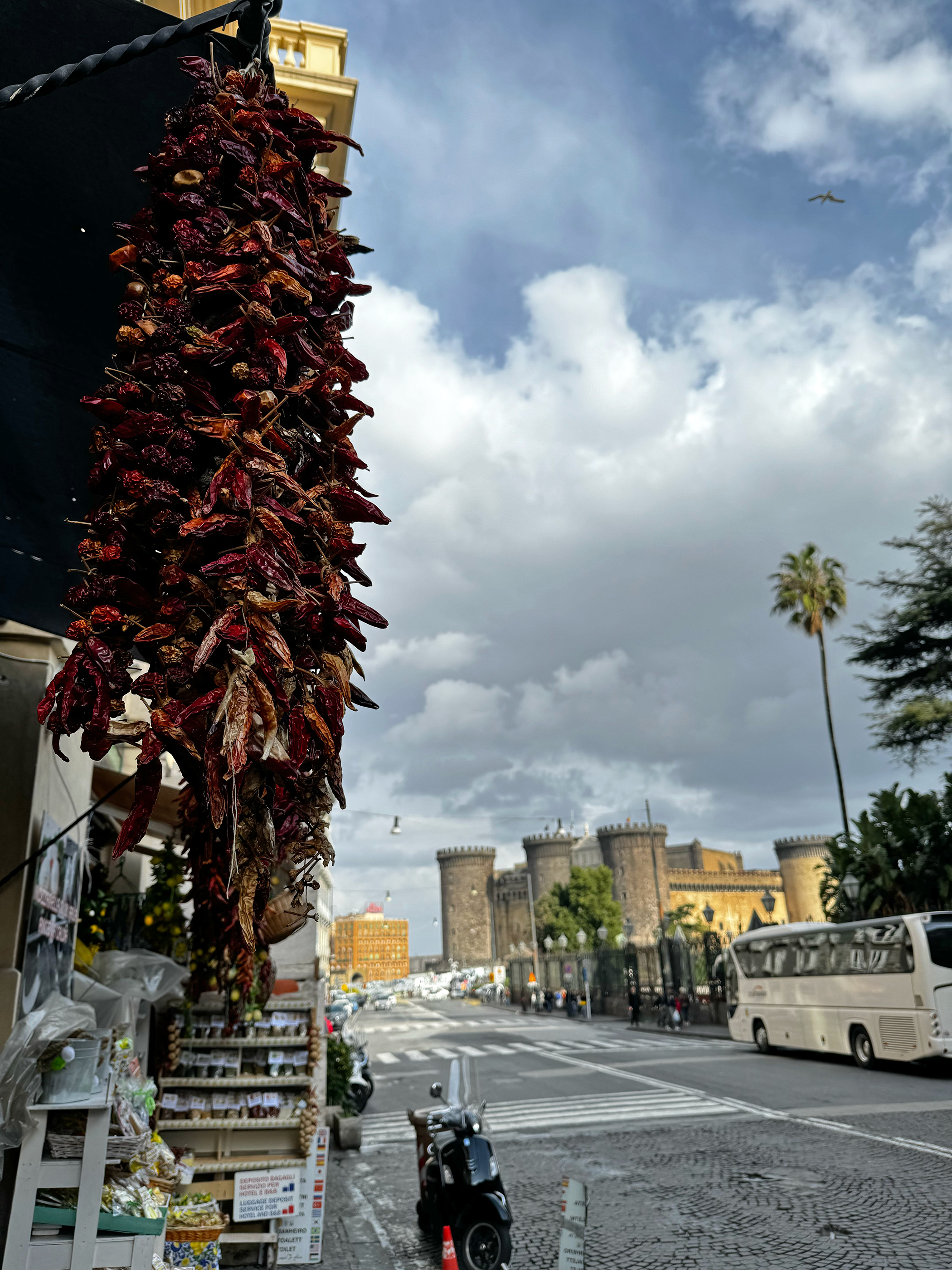
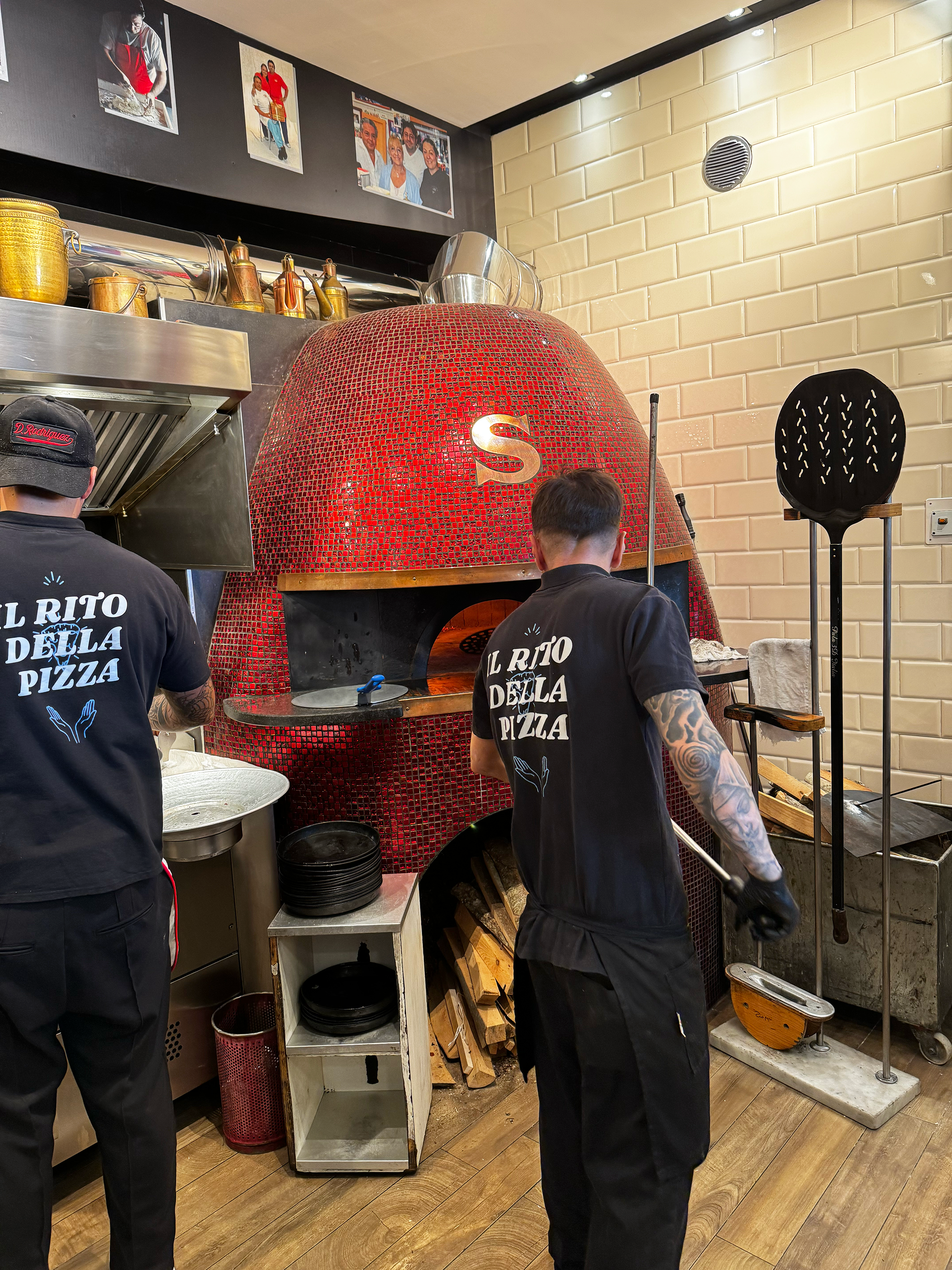
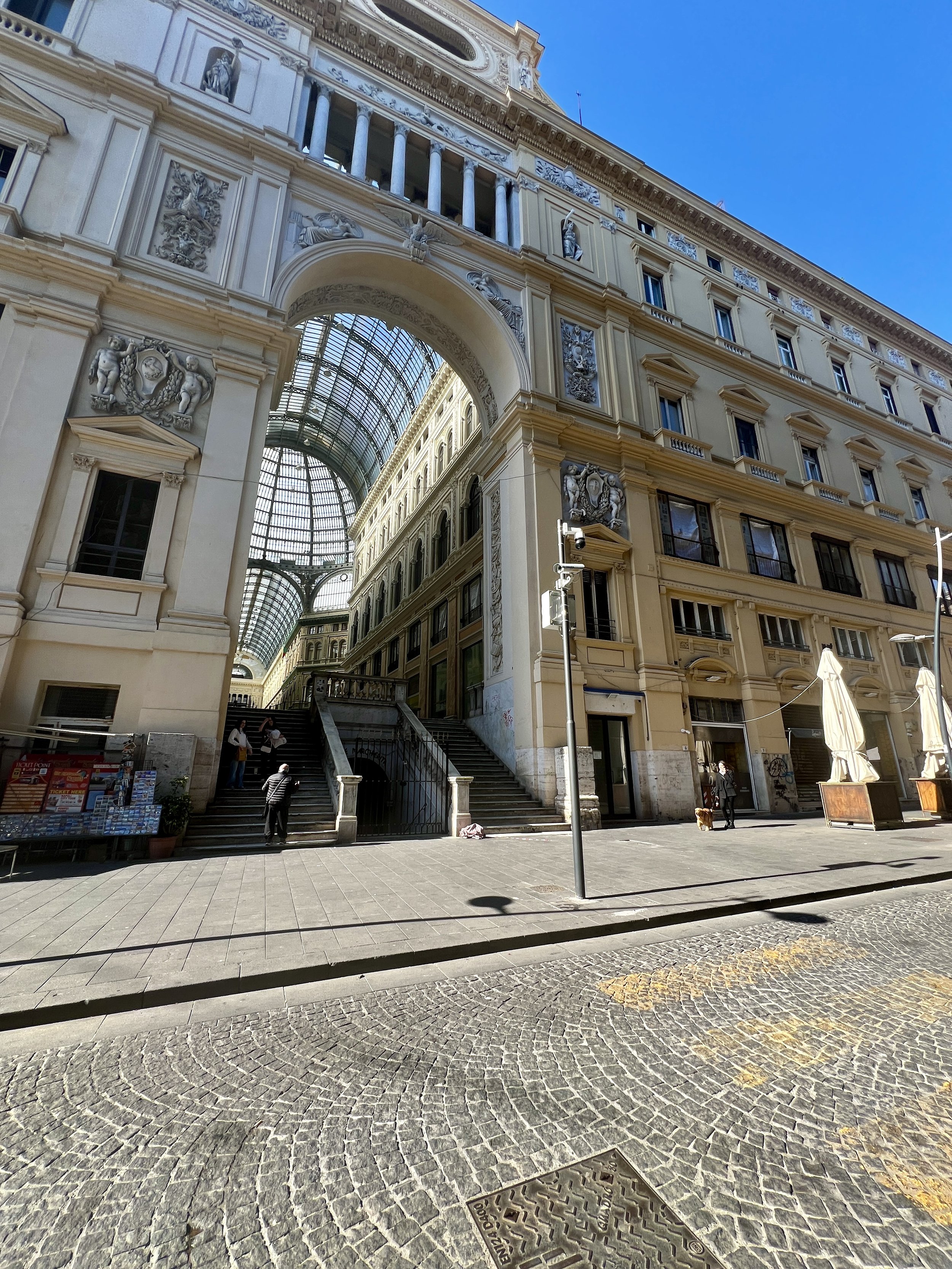
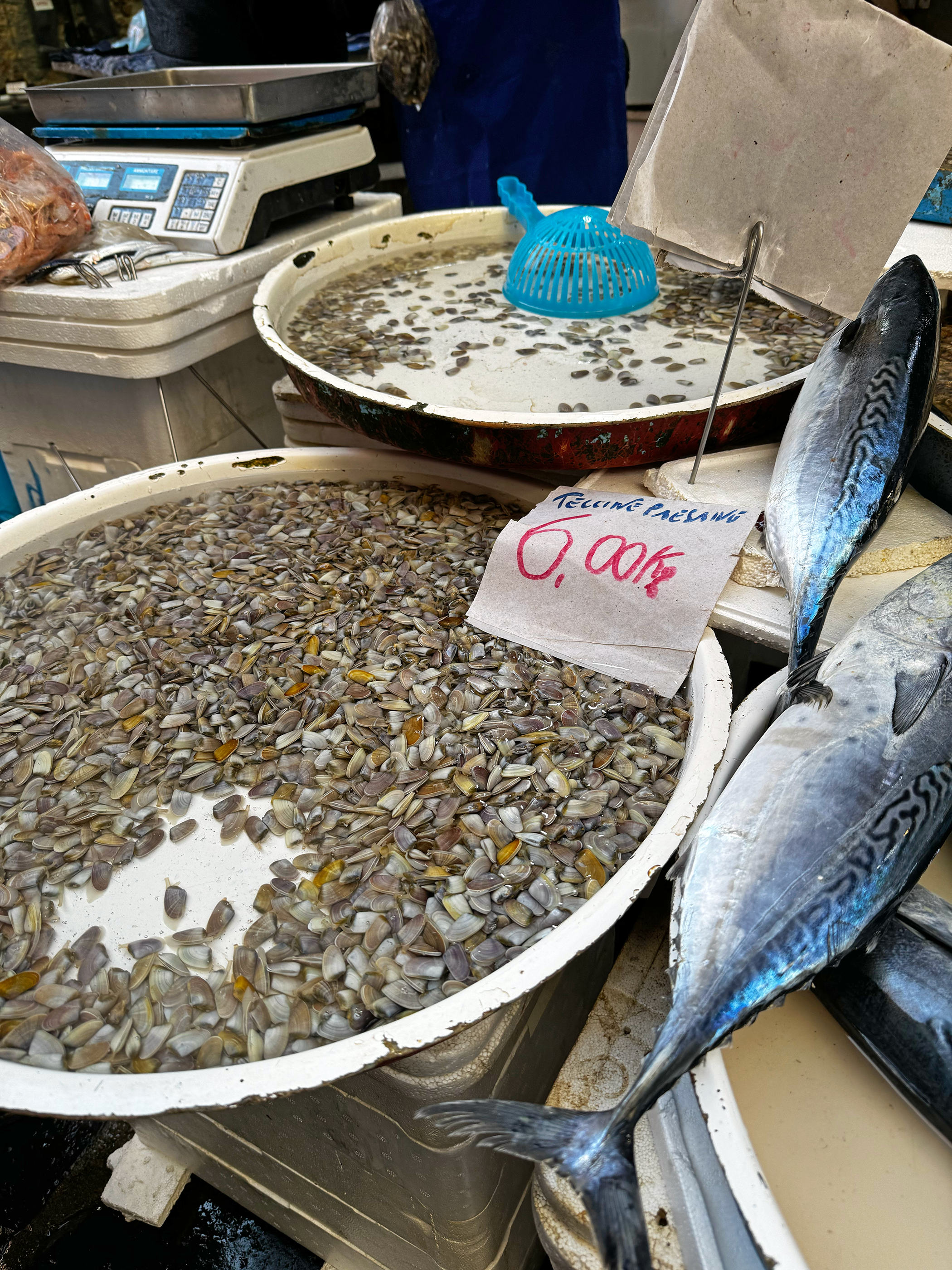
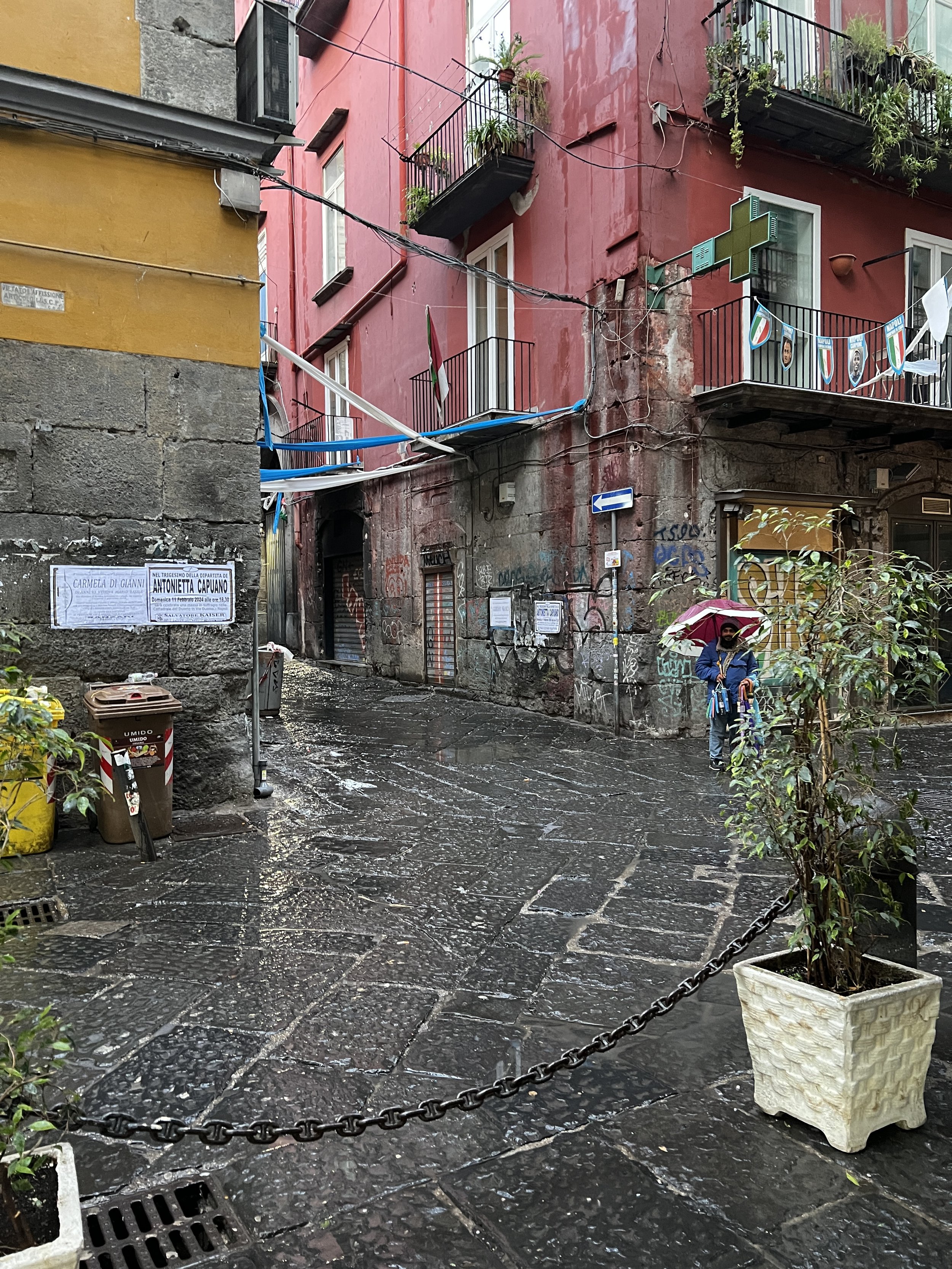
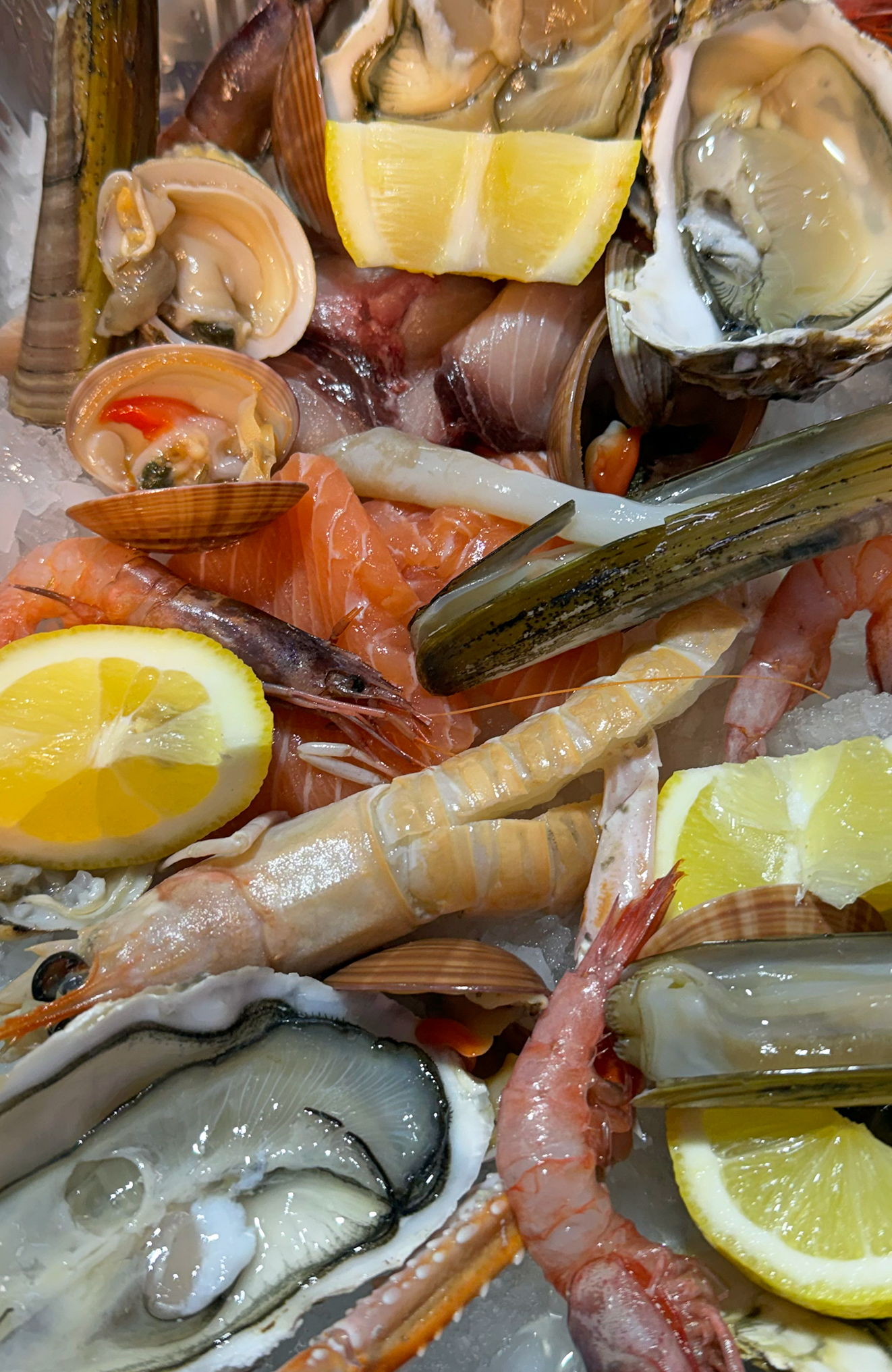
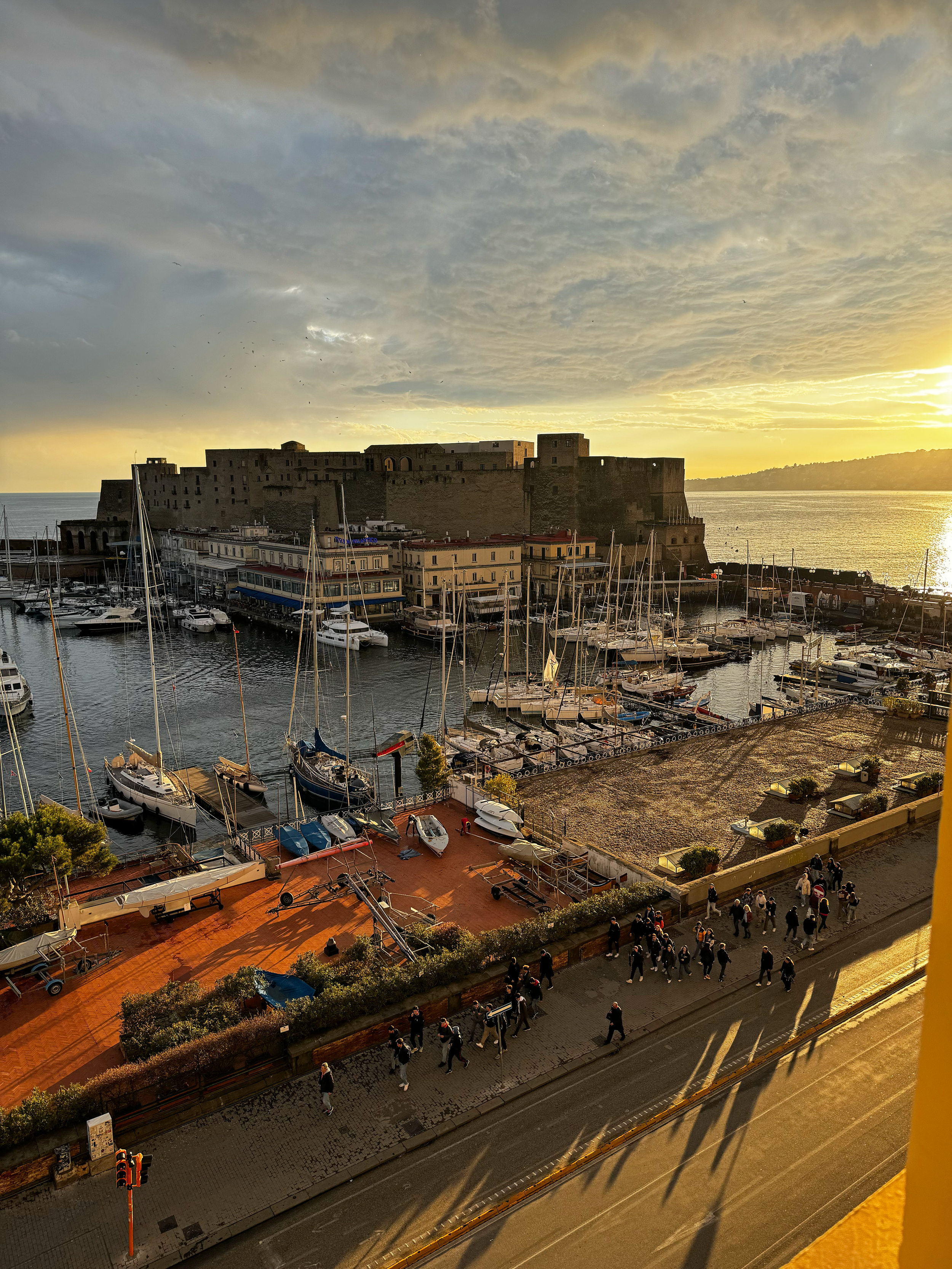
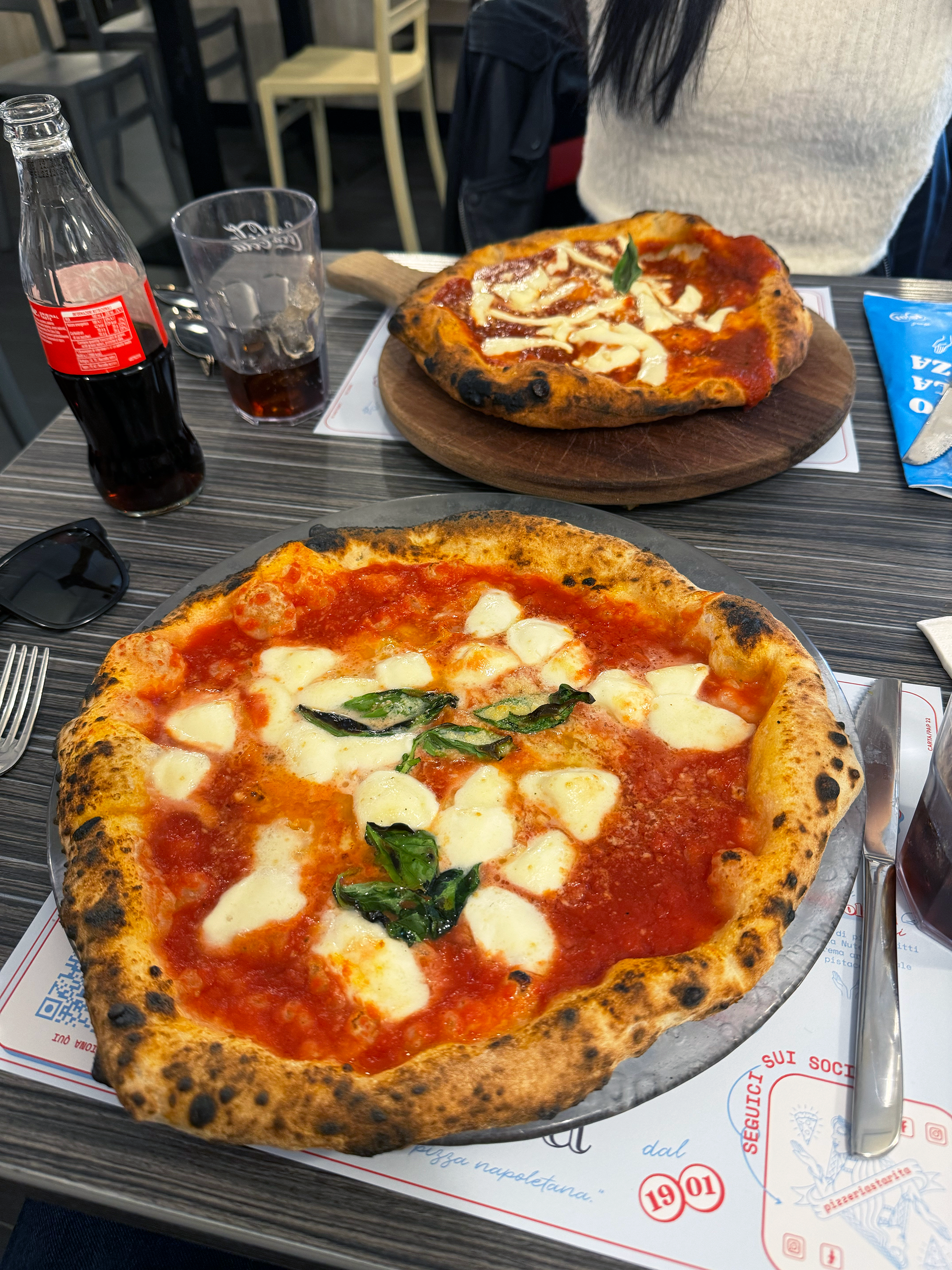
PART 1: NAPOLI
Naples is known for its beautifully chaotic energy, fried Napoletana cuisine and its extensive collection of museums and churches. We landed there on my birthday and immediately ran to the nearest pizzeria. It was pure heaven.
What to Wear in Naples in February
February marks the end of the winter season in Naples, and can best be described as warm in the sunshine and chilly otherwise. The average daily temperature in the city during February ranges from 8°C (46°F) to 14°C (57°F). Most days, I found myself wearing a leather jacket in the mornings and afternoons, and transitioning into a heavier peacoat at night. One thing to keep in mind is the wind factor that comes with being on the water. It definitely adds to the “ciao, I’m suddenly freezing” factor. Don’t forget to bring a light rain coat, too. We experienced our fair share of sprinkles. Here’s what we wore in Naples for our 4-night stay:
Dark wide legged jeans (with zero rips, unless you want to scream tourist)
Black skinny jeans (they’re still very much in style in Italy!)
Tailored pants
Leather pants
Leggings (for travel days)
2 jumper dresses
2 evening dresses for dinner
3 pairs black opaque tights
4 long-sleeve blouses / sweaters
Black turtle neck
Short sleeve shirts
2 blazers for layering
Hoodie
Leather jacket or bomber jacket
Light rain coat
Umbrella
Pea coat
Scarves
Black Booties
Comfortable sneakers (wore sneakers every day, booties every night)
Dress shoes
Leather backpack!! I have a mini one and take it everywhere.
Cross body purse
Perfume // cologne
Where to Stay in Naples
Artemisia Domus | Giardino was our haven hidden away from the city’s hustle and bustle during our time in Naples. It’s a gorgeous hotel nestled in a historic residential building that feels worlds away from everything and everyone else. When our taxi driver initially pulled up to the address, I have to admit I was slightly taken back and even confused by where we were actually going. After walking underneath a towering stone archway and beyond a fur coat shop, we were greeted by a time-worn marble staircase that led us to the hotel on the 2nd floor. It’s worth noting that we later were introduced to an exterior service elevator. I highly recommend using it when you’re dragging two-weeks worth of luggage behind you. It fits two people and literally nothing else - welcome to Italy.
Upon entering this boutique hotel, the delirium from our overnight flight melted away and we were enchanted by its charm. The welcome aperol spritz was an exceptional touch.
What we loved about the hotel:
It feels luxurious, boutique and quiet. In a city like Naples, you need a place to retreat to and be comfortable. We loved calling this place home for a few nights.
The rooms are spacious, with high vaulted ceilings and minimalist romantic touches.
The spa! They love wellness just as much as we do. Guests can enjoy their sauna, Turkish baths, sensory shower, tea tasting and massages upon request. We hung out in the sauna and Turkish bath as soon as we landed. The sauna is complimentary, and Turkish bath access is $25 per person. It was everything we needed after the long flight.
There’s a beautiful garden in the middle of the hotel filled with lush greenery, flowers and mandarin trees. Our room overlooked it and I felt like a fairy princess waking up to the garden every morning. ‘Twas a vibe.
Breakfast was complimentary with our stay and made life easy in the morning… when we woke up early enough to enjoy it. I loved their selection of freshly squeezed juices and pastries.
The concierge was more than happy to call restaurants on our behalf for reservations. Highly recommend utilizing your hotel concierge anytime you stay in Italy to help you with restaurant reservations. They have personal connections and can sneak you into places that may not have reservations available online. Most restaurants you’ll want to be dining at in Italy dont even have a website let alone a reservation system like Resy, so calling a couple days ahead is ideal.
What would have made it better:
They seemed a bit short-staffed at times
Not their fault, but our safe malfunctioned and we had to wait for their team to locate the master key. On a normal day, it wouldn’t have been an issue, but we were checking out that morning and were rushing to get to a scheduled tour.
Additional hotel things to note:
We stayed at Eurostars Hotel Excelsior for 2-nights and were impressed by the level of service, sea views and rooftop experience. The hotel is grand by design and couldn’t be better located. In my opinion, the rooms were extremely clean and average in size. I definitely appreciated how large and chic the bathroom was. Every woman who curls her hair while simultaneously brushing her teeth with a makeup bag on the bathroom counter knows how valuable that real estate can be. Most importantly, there’s nothing like waking up to the view of Mount Vesuvius, the city’s notorious stratovolcano, blowing smoke over the gulf. If you’re visiting Naples, you should experience that in itself, at least once.
AVOID La Lepre felice at all costs. We originally booked it for 2-nights after reading a slew of 5-star reviews. When we arrived our hotel room smelled like someone smoked 17 packs of Marlboro Reds in it, the decor was reminiscent of Fred Flinstone’s 1970’s bedrock shack, there was a hot tub with two leather headrests far too close to the bed and neon purple uplighting in almost every room. When we booked the hotel, the owner promptly messaged us on Whatsapp to relay that we would be staying at a different property address than what we selected and paid for. The entire experience made for a sour, but now laughable, night of our trip. It was a non-refundable nightmare.
Where to Eat in Naples
Baba rum sponge cake and sfogliatelle con cioccolato
Gran Caffe Gambrinus
I’m intentionally starting you off with this famed coffee stop because you’ll want to hit it up immediately after landing in Naples. It’s vivacious, ornate and will vastly immerse you in the Neapolitan culture upon thrusting open its gorgeous glass doors. There’s a few different ways you can work the plan here – you can opt for the authentic Italian experience and stand at what’s assured to be an overflowing, quick-service espresso bar, or request a table in the restaurant’s full service dining room for a slower introduction to the city.
Bryce and I were instantly distracted by stunning rows of Italian pastries displayed behind glass, begging for us to order as many as we could stumble through the pronunciation of. So, we went for the standing route and soaked up the scenery in between bites. One thing to note: at all espresso bars in Italy, it’s customary to pay for your order at a separate cashier station and then present your receipt / recite your order at the espresso or pastry bar. It’s a nice touch to leave a tiny bit of change as a tip to the barista, but not required.
Piping hot espresso, Napoli’s signature baba rum sponge cake and sfogliatelle con cioccolato is the ultimate move here. If you’ve never tried sfogliatelle, it’s a flaky, fine-layered, shell-shaped pastry that’s traditionally filled with cooked semolina, sweetened ricotta, eggs, sugar, milk, and candied citrus peels. You’ll see it with different, more creative fillings depending where you are. It’s a Neapolitan icon.
One minor detail to leave you with: the bathroom is downstairs on the far right side of the restaurant. There's an attendant who will surely expect to be tipped, murmuring under his breath repeatedly at those who don’t, so definitely throw him a euro! There are some places in Naples where you’re required to pay to use the restroom — this is not one of them. Lastly, it’s highly likely an elderly Italian woman will cut you in line when you’re on the verge of wetting your pants (I’m speaking from experience here) – but it’s well worth it.
The petit platoux from CrudoRe
CrudoRe
This restaurant is Michelin recognized, has a beautiful open kitchen in the center of the space and after experiencing it on my birthday, I can confirm it’s celebration-worthy. You know when you’re at a hibachi restaurant on your birthday and somehow the room goes dark followed by everyone’s faces being illuminated by an amateur multi-colored light show? Everyone sings. A scoop of vanilla ice cream with a dollar store candle plunged in the middle of it is delivered to you promptly. You nearly expire from embarrassment, but eat the ice cream anyway? WELL. Imagine the exact opposite of that, in a luxury setting with a room full of Neapolitans dripping in black designer apparel, purring “happy birthday” to you in Italian. Instead of burying my face in my angora sweater, I blushed extra hard and decided it was one of the best moments of my life. I’m sure the wine helped.
This was our first dinner of the trip and we ordered: the petit platoux (an assortment of raw seafood, see photo above), tuna belly carpaccio with puntarelle and porcini mushrooms and shared a plate of spaghettone with razor clams, basilico and Parmesan. To serenade my final hours of being 33, we ended with tiramisu that was fucking delicious. The wine program was impressive and presented in the form of what I can only describe as a cellar bible. There was a sprawling display of fresh seafood on ice an arms length away from the kitchen pass. Pure eye candy for anyone with an affinity for seafood that’s been caught the same day it’s being served. CrudoRe’s commitment to quality was extremely clear and admirable across the board.
Zito alla Napoletana tradizionale
Januarius
Walk out of the legendary Duomo church and into this Michelin guide adorned restaurant. Inside, you’ll find the owner rocking blue tinted sunglasses and a hospitable aura that feels like a warm Italian embrace when you step through the door. A glass enclosed counter filled with cured meats and cheeses serves as a natural introduction to your meal. However, we started our lunch with the insalata di mare, a chilled seafood salad highlighting locally fished octopus and calamari. The seafood sat proudly on top of a potato salad dressed with olive oil, lemon and celery. It was light, refreshing and perfectly prepared.
For the pastas, we wanted to do a side by side comparison of the traditional “Sunday sauce” versus the Genovese version (Zito alla Napoletana tradizionale vs. zito la Genovese). The traditional Napoletana sauce was made with tomato and stewed beef, pork and veal. It’s exactly what you envision when you think about an Italian-American red sauce. Shoutout to my ancestors — they’d be proud watching you devour this. Conversely, the Genovese was sweeter and caramelized onion forward, and was also cooked down with an assortment of meat. It had an ultra familiar taste that resembles a comforting French onion soup. Unique and in its authentic glory, it’s something you’ll want to savor bite by bite.
Pizza with mozzarella di buffala and mixed olives
Diego Vitagliano
When one steps into Naples for the first time, the need to dive head-first into an ocean of all things mozzarella is totally understandable. Our order at Diego Vitagliano fully supported that mission, including: pizza with mozzarella di buffala and mixed olives, mozzarella di buffala salad and crispy mozzarella en carrozza.
Recommended to us by our first hotel and within a 1 minute walk, this restaurant was convenient, crave-satisfying and quite literally, award-winning. They pride themselves on PIZZA and they clearly do it well, as they were seemingly busy every time we walked by. For my friends with dietary restrictions and food sensitivities, they have a totally separate gluten free oven and cooking area. It was the first time I’ve ever seen this in Italy and it was cool to witness, especially since I was seriously gluten free for a number of years. (My stomach sucks). Progressive? Yes. Delicious? Double yes.
Bryce with his fried pizza + stromboli research institute shirt
Gino Sorbillo Antica Pizza Fritta
Fried pizza is the game you’re playing here and this restaurant is touted as one of the best fried pizzas in Napoli (they fry everything in this ancient city). We ordered two fried pizzas, one with smoked mozzarella, salami and tomatoes, the other with mozzarella and cheese. I’m a fucking puritan, so the OG mozz and cheese spoke my language. You order at the counter, wait in a sea of pizza lovers seemingly hailing from all over the world, and down your pizza standing at one of the few high top tables outside of the restaurant.
Pro tip: bite down into the pizza *just enough* to let out the steam out (that baby is hot, hot, hot) before you fully dig in. If you ate hot pockets as a kid, you’ve been training for this your whole life. Burning your mouth on fiery hot pizza is never fun, but is thankfully easily avoided. Fried pizza is a mandatory Neapolitan staple to try when you’re in the city. The dough is light, fluffy and effortlessly cooked. The ingredients were extra fresh. We loved it. It’s worth noting that this restaurant has multiple locations in Napoli and in the states, but this specific location specializes in fried pizza only.
Fragolini tart - also known as a strawberry custard tart
Osteria da Antonio
Linguine with razor clams + tiny clams smaller than your fingernails, arugula salad with parmigiano, verdure misto, grigliata frutta di mare and a fragolini tart. Say hello to our entire order at this 12-table, family owned restaurant near the sea. What’s not listed on the menu is the lovely elder Italian man who clearly owns and operates the restaurant, and great house white wine that seemed to never see the bottom of an empty glass. Everything that came out of the kitchen felt like it was made with love, as if my great grandma was hiding in the back over the pasta water pot. Would we return? Hell yes.
Osteria da Antonio felt homey, in a way that inspired you to become friends with every guest. When we originally walked up to the restaurant, the owner seemed visibly annoyed that we were alive and hungry. But by the end of our meal he was asking us where we were from, giving us hugs and taking photos with us. This type of experience is one that we found to be common on our Italian restaurant quests — and it makes you want to earn the love and respect of these incredibly talented and hard working people even more. There’s something about the magic of unlocking tiny bits of Italian culture, one experience at a time. To us, it felt rewarding and precious, and certainly never to be taken for granted.
Fritti di mare with anchovies and small shrimps
Pescheria Azzurra
Naples is synonymous with the sea. There’s fish markets seemingly positioned on every corner, highlighted in every restaurant menu and in every breath you take while traipsing through the city streets. And rightfully so, as Naples has some of the best seafood in the world. With that comes fish markets lined with pornographically pristine ingredients. They were the kind of displays that Bryce dreams about having access to every time he casually feels like whipping up a seafood pasta fish or fritto misto. There’s everything you can imagine, endless varieties of live shellfish and mollusks to dozens of fish that were caught when the sun rose, as far as the eye can see.
Pescheria Azzurra is one of the best examples of an iconic Neapolitan fish market. It’s small, but insanely high volume, located in a narrow alley filled with tourists… and Italian ladies dressed in mink coats with overstated sunglasses scrutinizing over the day’s bounty. The dining experience is broken down into three parts: the market, a walk-up counter for fried seafood cones for diners on the move and a quaint full service restaurant made up of a few plywood high top tables and chairs. It’s ultra casual by design and simplistic in its approach, allowing the ingredients to speak for themselves. One of our favorite pastas of the trip was their spaghetti frutti di mare with cherry tomatoes, mixed clams and mussels. Such a simple and perfectly executed classic pasta, served in an aluminum to-go style box and plastic forks all for a whopping 10 euros. It was so good that Bryce officially added it into his death row meal lineup. I don’t blame him.
The crudo di mare platter with oysters, red and pink shrimp, several varieties of clams, langoustines, thinly sliced salmon and swordfish, was buttoned up with huge chunks of freshly cut lemon. It will have a special place in my heart until it stops beating. That’s dramatic, but warranted. We also devoured an order of fritti di mare with anchovies and small shrimps. The shells of the shrimp were so crispy and delicate that you can eat the entire thing, head included, if you’re a real gourmand. We affectionately deemed the fried fresh anchovies as the chicken wings of the sea. Dare I say, this was one of our most prized meals of the entire trip. It doesn’t appear to have a website, but their Trip Advisor page will give you the gist of what to expect. Show up early if you want to grab a table.
Candele spezzate a mano alla Genovese
Ristorante Europeo Mattozzi
With copper pans, varnished wood wainscotting, antique paintings and porcelain plates adorning the walls, Ristorante Europeo Mattozzi is Italian nostalgia for the eyes. Helmed by the Mattozzi family more than 150 years ago, this restaurant concept is backed by generations of love. You can feel its rich history in every plate that hits the table, and every time you curiously lock eyes with the owner sitting at the front table. Every detail felt like it was curated through his perspective, almost as if we were guests in his home.
When seated in the front dining room with what appeared to be strictly Neapolitan businessmen – we looked at each other in silent confirmation of what was to come. Some of the older more nefarious looking gentlemen were accompanied by what we could only assume was their Goomars. Fashionably dressed women less than half their age, who were clearly ready for a fancy night out. It was like living in an episode of the Sopranos in the best way possible.
We started with a bowl of zuppa procidana con faglioli, a soup with white beans, small cuttlefish and cherry tomatoes. It was much-needed solace from the weather outside, and a hearty beginning to our personal tour of Mattozzi’s local cuisine. Next up, we ordered a classic caprese salad with freshly pulled buffalo mozzarella, followed by a plate of endives with earthy olive oil, olives and capers. Buffalo mozzarella gets a lot of hype, especially from Napoli natives, and we both agree it’s real. It’s a whole different animal (pun intended) than the buffalo mozzarella you buy and eat in the states because of how fresh and new it is. When you cut into it the bouncy, pearly white cheese, milk seeps out onto the plate as if its a living, breathing being of its own. Our meal came to a close with candele spezzate a mano alla Genovese, a ritualistic Neapolitan meat sauce spooned over super al dente tube-like pasta. And of course, we didn’t leave without a shot of limoncello — on the house.
Pizza margherita (top), Pizza Montanara Starita (bottom)
Starita
One pizza margherita, one pizza Montanara Starita, an order of fiori di zucchini fritte, 2 coca colas and one unbuttoned pair of jeans later… I became an extremely full believer in this restaurant’s mantra: “Io credo nella pizza Napoletana.” In English, it translates to “I believe in Neapolitan pizza.”
First things first, this restaurant is deceivingly huge. When Bryce and I walked in, we were escorted beyond the pizzaiolos and their wood burning ovens, through the first dining room, down another hall and then finally to our seat, reminding us of the underground labyrinth of catacombs we had explored the day prior. The atmosphere feels classic, but youthful. We were surrounded by younger couples on pizza dates and families with smaller children sopping up pizza sauce on miniature plates with tiny chunks of fried dough. Specialty pizzas zoomed by our heads as we waited for our order, previewing the massive list of Starita’s specialty pies. What set this pizza experience apart from our other ‘za adventures was the pizza Montanara, a hybrid of pizze fritta and wood-oven baked pizza. The dough is stretched and par-cooked in the fryer, then topped with ingredients and finished in the wood-oven until it’s charred to the pizzaiolo’s satisfaction.
I definitely preferred the traditional margherita pie, cooked in the wood burning oven. Bryce felt that the double cooked version was more interesting because of its choice of ingredients. Instead of the tried and true san marzano tomato base, Starita sauced our pie with braising sauce, ragu Napoletana; giving the pizza a touch of umami. The bite was more sweet and unctuous, and less acidic and bright compared to the classic preparation. In the end, Bryce walked away saying that Starita’s margherita pizza was one of the best he’s ever had. A true example of “practice makes perfect.”
Best Cocktail Bars in Naples
Scotto Jonno
Located inside of the beautiful Galleria Principe di Napoli, this handsomely designed restaurant and cocktail bar feels extremely well pronounced. It’s timeless, yet contemporary, and lively, without it being too hard to have a conversation. After getting properly acquainted with its art deco corridors, you’ll settle into what feels like an eclectic piece of historic treasure.
Order their signature drink; an inventive play on a Negroni. It’s served in an ice ball as an homage to their annual tradition of seeing if the blood is dry or wet in San Gregorio’s holy blood relic. If it’s dry, it symbolizes bad luck and terrible events to come (think earthquakes, volcanos erupting, acts of God and Nature). If the blood in the relic liquifies, the city can prepare for a fruitful year ahead. Our bartender Marco recited the story as I was hammering the ice ball to reveal a highly anticipated Negroni flood in the bottom of my rocks glass. I asked him if anyone ever broke the glass while trying to crack into the ominous ice ball, and surprisingly, only two people had that kind of super strength… or one too many drinks to hit the ice head-on.
If you love Clover Clubs like yours truly, step outside of your boozy comfort zone and try their Pegu Club. It’s a shaken cocktail made with triple sec, gin, lime, angostura and orange bitters. Bryce had the gimlet and loved it, too. Widely known and prestigiously noted, when you experience Scotto Jonno for yourself, you’ll know precisely why. They keep the olives and taralle flowing – a blessing after cocktail number two.
The infamous gin fizz
L’antiquario
This speakeasy style bar is where you go to selectively see and be seen. We were told we’d be lucky to snag a seat at the bar, and as luck would have it, we were welcomed inside the moment we arrived.
There’s a special kind of spirit infused in this cocktail bar. Plush red velvet love seats and an elevated grand piano make it feel as if you’re in a 1920’s time capsule. What brings you back to the present moment is their playful commitment to modern hospitality. Once you’ve had a ride on their custom Negroni carousel, it’s hard to envision drinking anywhere else. Their cocktail presentations are whimsical without sacrificing the classic allure. We found their bartending team to be disciplined in a professional manner you can’t help but respect, and fully dressed for the occasion. They mean business. And in a world full of bad Negronis, I like that.
Other honorable mentions: an extra heady gin fizz that hit the bar without an eye roll from its tender, prosciutto crudo and an order of anchovies and butter toast. This bar is also recognized by the World’s Best 50 Best.
Misture’s play on a Clover Club — every bubble equals a wish!
Misture Cocktail Bar
This little number shakes up specialty craft cocktails in a cozy, appropriately lit space. With special nods to Napoli, like an interactive ode to Vesuvius via a smoking cocktail in a volcano shaped glass, we loved that they didn’t take themselves too seriously. It’s a quaint bar with a few tables in an intimate setting. Ask for Giusy! She’s an amazing bartender and loved chatting about Naple’s bar scene with us.
Other Honorable Mentions to Explore
Transatlantico - drop in for an aperitivo by the water with a view of Vesuvius. Best visited at sunset.
Pescheria Capri - seafood with pasta, pasta with seafood. Need I say more?
L'Antica Pizzeria da Michele - FAMOUS pizza in Naples. Try it and report back.
Pizzeria Concettina ai Tre Santi - Michelin recognized
Pizzaria La Notizia - Michelin recognized
Da Attilio - Michelin recognized and serves pizzas shaped like an 8-point star
Ristorante Al Convento Cetara - Michelin recognized, and has al fresco dining
La Dispensa di Armatore - Michelin recognized, seafood-forward bistro with seating overlooking the sea
Hot Takes + Tips
Attractions: there’s so much to see in Naples! Admire the works of art and architecture at the Duomo. Take an underground tour of Napoli Sotterranea. Stand in awe outside of the Castel Nuovo on the sea. Sip an aperol spritz in any of the city’s piazzas. Visit the catacombs and the Museo Archeologico Nazionale di Napoli. And SHOP. The stores are endless. One thing I wish we saw was the Complesso Monumentale di Santa Chiara.
Rental car: Do not, I repeat, do not rent a car in Naples if you don’t plan on venturing outside of the city. The streets are energetically charged and hectic when on foot and in taxi cabs. We rented a car to get to a few tours that were an hour outside of the city and boy, it was stressful driving in the city center. Even people all over Italy comment on how intense it is to drive in Naples. Plus, parking garages average around $30-$50 per night.
Taxi stands vs. Ubers: taxi stands are pretty easy to locate and utilize (all you have to do is ask your hotel concierge or flag down a local to find one). With that being said, taxi drivers are Napoletana businessmen on four wheels, and will price gouge you if you let them. Uber is a safer bet when available and has obvious pricing transparency.
Waterfront views are worth the spend when it comes to hotel selection. With that being said, we felt like a lot of the hotel properties along the water were outdated. It’s a compromise you can decide to make or not.
Safety level: the city’s reputation for crime isn’t something we ignored. In the same breath, it’s not like we were doing anything that would garner the attention of the Camorra, the regional mafia. Generally, we stayed together 98% of the time and felt safe around locals and tourists alike.
Day Trips from Naples
Podere dei Leoni: we visited this incredible mozzarella producer, and wow, it was an experience to remember! Their facility is about an hour outside of Naples, giving you the perfect opportunity to pop into one of Italy’s notorious Auto Grill’s for a freshly squeezed orange juice and espresso on the way. Once you arrive at Podere, be sure to stop at their adjoining market for a preview of all of their Campania DOP mozzarellas and more.
Strega: otherwise known as the Italian “liqueur that’s made out of sunshine,” was born just outside of Naples in Benevento. Bryce and I had a personal tour led by the company’s president, Giuseppe D’Avino. Not only did we learn about the history behind the brand, we received a full tour highlighting the ingredients, distillation process and bottling assembly line. It was the most “behind the scenes” and inspiring interactions we had during our time in Italy.
Amalfi Coast: Naples will forever be associated with the beach . Bryce’s personal tip: “if you’ve seen it on Instagram a million times, it’s probably one of the most touristy, normy places to be, overpriced and not even vaguely Italian. Here’s looking at you: Positano, Cinque Terre and Pisa. Don’t feel like you need to base your trip around those places. If anything, there’s more beautiful, smaller coastal villages that will give you the ambiance you’re craving, without the tourist traps and selfie sticks.”

